Equipment
Equipment changes come full circle for Choi
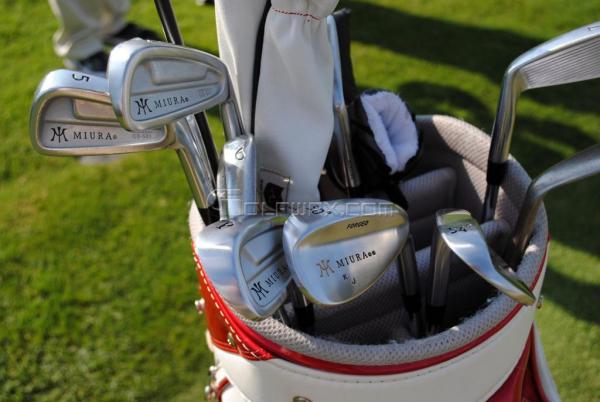
By Zak Kozuchowski
GolfWRX Managing Editor
There’s a simple rule most golfers follow when making equipment changes – don’t mess with success.
And golfers certainly shouldn’t switch from a set of clubs that helped them win the biggest tournament of their lives – at least not for a while. But that’s exactly what K.J. Choi, winner of The Players Championship last year, has done in 2012.
In early March, Choi put away the set of Miura CB-501 irons that he used in his victory at the TPC Sawgrass Stadium Course for a set of Cleveland 588 CB Forged irons. Just a few weeks later he sampled another manufacturer’s clubs, Ping i20 irons. But as the one-year anniversary of Choi’s win approaches, he again finds himself using the same set of irons that he used last year at The Players.
Many people will jump to point out that Choi’s tinkering was unnecessary – he should have been working on his game instead of trying to catch lightning in a bottle with an equipment change, they might say. But there’s another way of thinking about equipment changes. Bill Choung of CompuGolf Center in Dallas has been working with Choi on his equipment since March 2010. Since Choung opened CompuGolf nine years ago, he has been seeking to answer a simple question,
“How does an equipment change impact the golf swing?”
He’s found that changing equipment has a very real impact on a player’s swing, especially with tempo and rhythm.
The goal of Choung’s work with Choi has been to give Choi a higher trajectory and more spin on his iron shots. Choi felt that he wasn’t hitting the ball high enough or with enough spin to control his distances at major championships – setups that generally have firm greens and tight pin positions.
There are several different ways of achieving that goal, and Choi and Choung have tried just about all of them. Choi played the 2011 Masters with a 6-iron hybrid, which gave him a higher trajectory, more forgiveness and more spin. But Choi felt that he was sacrificing workability and feel, which led to more experimenting.
Choung hit paydirt when he built Choi a set of Miura CB-501 irons just days before the 2011 Zurich Classic. To create Choi’s desired ball flight, Choung used KBS Tour parallel tip shafts, which are different than the taper tip shafts used by nearly every other PGA Tour player. Whereas taper tip shafts are precut to a specific length for a certain club (6 iron shafts are generally used in 6 iron heads), parallel tip shafts are uncut, which means that they can be trimmed to fit any iron head. This allows the club builder to trim the shafts to the exact stiffness that a player desires.
Shaft stiffness, which is measured by the frequency of a shaft, is important because according to Choung it changes the way a player loads and unloads the club during the swing. When trimming Choi’s parallel tip shafts, Choung cut more off the butt end of the shaft and less off the tip, creating a “softer” tip that allowed for a higher trajectory and more spin. Choi liked the combination of the parallel tip shafts and the Miura CB-501 head, and the results proved it. That week he put the clubs in play to finish in the top 5 at the 2011 Zurich Classic, and of course, to win The Players two weeks later.
There are at least two reasons why Choi decided to change from the iron set that brought him a $1.7 million payday and a new level of fame in the golf world. First, he received information that parallel tip shafts were not generally played on the PGA Tour, which made him interested in trying taper tip shafts. Second, he changed because he was in the process of trying out different iron heads and shaft combinations that he thought might improve on the results of the Miura set he used to win The Players.
When Choi changed to a taper tip shaft, he was forced to use a softer flex to give him the trajectory he wanted. While this resulted in the desired higher flight, he lost consistency and control.
Science or art?
Talking about Choi’s golf clubs in terms of shaft frequency, spin rate and launch angle creates the assumption that his swing is always the same. While Choi does have one of the most consistent golf swings on Tour, even he falls in and out of bad habits. That’s why it’s Choung’s belief that no matter how technically sound a golfer’s fundamentals are, the golf swing is still an organic movement.
“When [golfers] change clubs, what they are really doing is changing their swing,” Choung said. “More than anything, they are inducing a change in tempo and rhythm.”
So it’s no surprise to Choung that Choi has returned to his Miura CB-501 irons with parallel tip shafts. He was struggling during the time he was playing Cleveland and Ping irons, shooting only two rounds in the 60s during that period. Last week, when he returned to the Miuras, he shot two rounds in the 60s and finished tied for 39th. It wasn’t a huge improvement, but it was his best finish in relation to par since the Hyundai Tournament of Champions in January.
Choung said that Choi’s performance since switching back to parallel tip shafts might have improved because of the increased tip diameter of parallel tip shafts — .370 inches instead of the .355 inch tip that taper tip shafts offer. So why don’t more Tour pros opt for parallel tip shafts if they offer more stability? According to Choung, it’s because parallel tip shafts are much more labor intensive to build. Choung and his staff at CompuGolf can build a set of taper tip shafts in about 30 minutes, while it takes them about three hours to build a set of parallel tip shafts.
A lot of independent club builders and even Tour vans can’t justify spending extra time to create frequency-matched sets either, but Choung’s research has shown the value in it. Because of the chaotic nature of the shaft industry, where one industry’s stiff flex is another’s x-flex, Choung places huge value in frequency matching, which streamlines the frequency throughout the set. For example, Choi’s driver shaft frequency, the base measurement Choung uses to find the frequencies for the rest of his clubs, is 271. As shaft length decrease, however, frequency must increase to match. Choung and his team did testing of exactly how many cycles frequency should increase as the shaft shortens .5 inches, and their researched concluded that four cycles is best. That’s why Choi’s 4 iron, which measures 38.5 inches, has a frequency of 314, while his 60 degree wedge, which measures 34.5 inches, has a frequency of 334.
So what does all this mean for the average golfer? Even if you don’t swing like Choi, Choung said that there is still good reason to go through a verifiable fitting process, especially processes like his that have an improvement guarantee.
“A lot of golfers come to me and they say I’m hitting my driver well, but can’t hit my irons,” Choung said. “Or they say that they’re hitting their irons well and can’t hit their driver. Often there’s a total mismatch between the driver and the irons. They’ve adapted their swings to either the driver or the irons.”
If you still can’t be swayed to go through a custom-fitting process, Choung has this advice for you. The club that you liked demoing so much – buy it. But don’t order it. Buy that exact club. Because chances are, the one you order will be slightly different.
Click here for more discussion in the “Clubmaking” forum.
- LIKE0
- LEGIT0
- WOW0
- LOL0
- IDHT0
- FLOP0
- OB0
- SHANK0
Equipment
Coolest thing for sale in the GolfWRX Classifieds (4/18/24): TaylorMade BRNR mini driver head
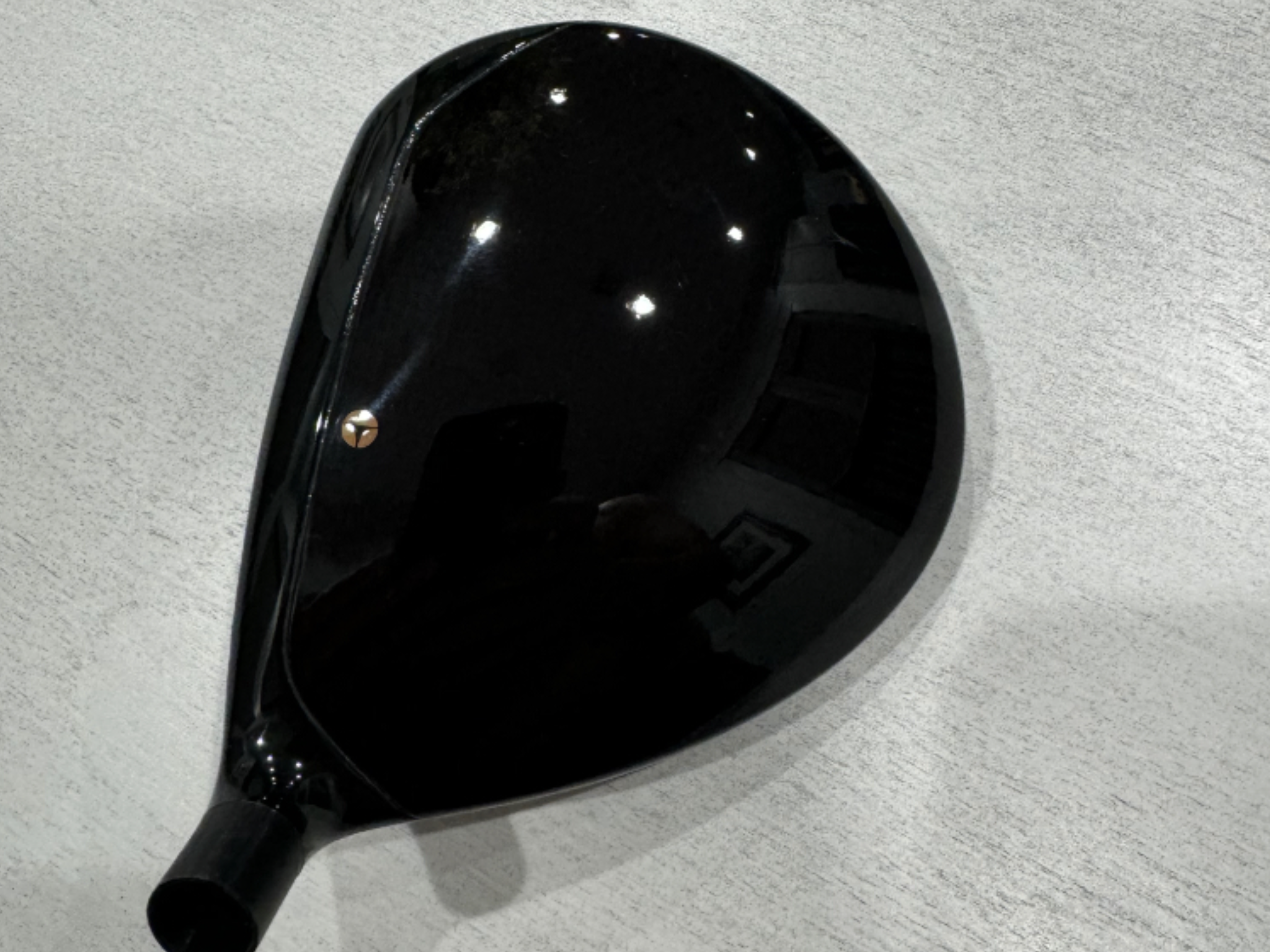
At GolfWRX, we are a community of like-minded individuals that all experience and express our enjoyment of the game in many ways.
It’s that sense of community that drives day-to-day interactions in the forums on topics that range from best driver to what marker you use to mark your ball. It even allows us to share another thing we all love – buying and selling equipment.
Currently, in our GolfWRX buy/sell/trade (BST) forum, there is a listing for a TaylorMade BRNR mini driver head
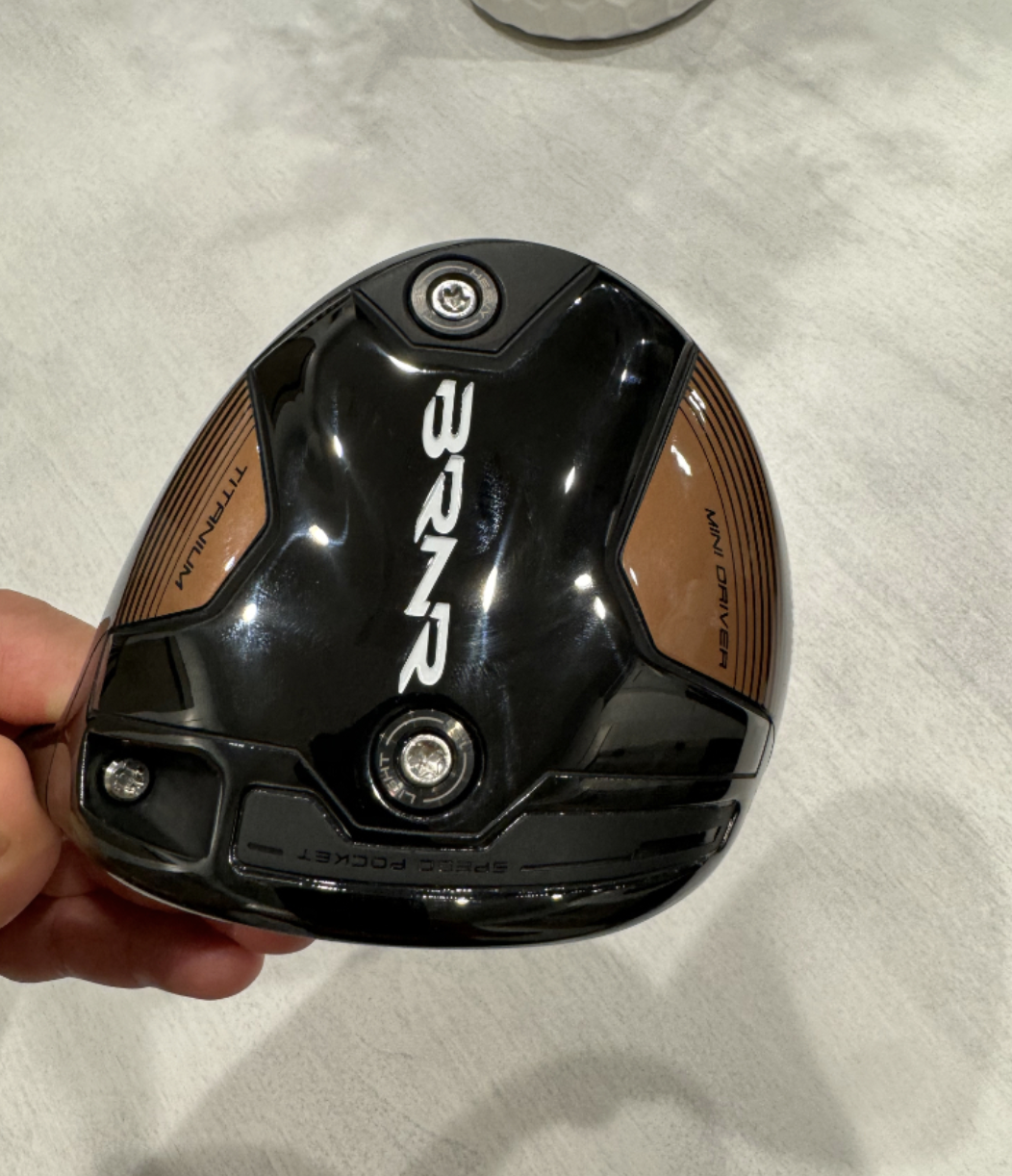
From the seller: (@lasallen): “For sale is a BRNR mini 11.5 deg head only in brand new condition. $325 shipped.”
To check out the full listing in our BST forum, head through the link: TaylorMade BRNR mini driver head
This is the most impressive current listing from the GolfWRX BST, and if you are curious about the rules to participate in the BST Forum you can check them out here: GolfWRX BST Rules
- LIKE1
- LEGIT0
- WOW0
- LOL0
- IDHT0
- FLOP0
- OB0
- SHANK0
Equipment
Coolest thing for sale in the GolfWRX Classifieds (4/18/24): Ping PLD Limited Anser – 1988 Open Championship – #2 of only 88 Made
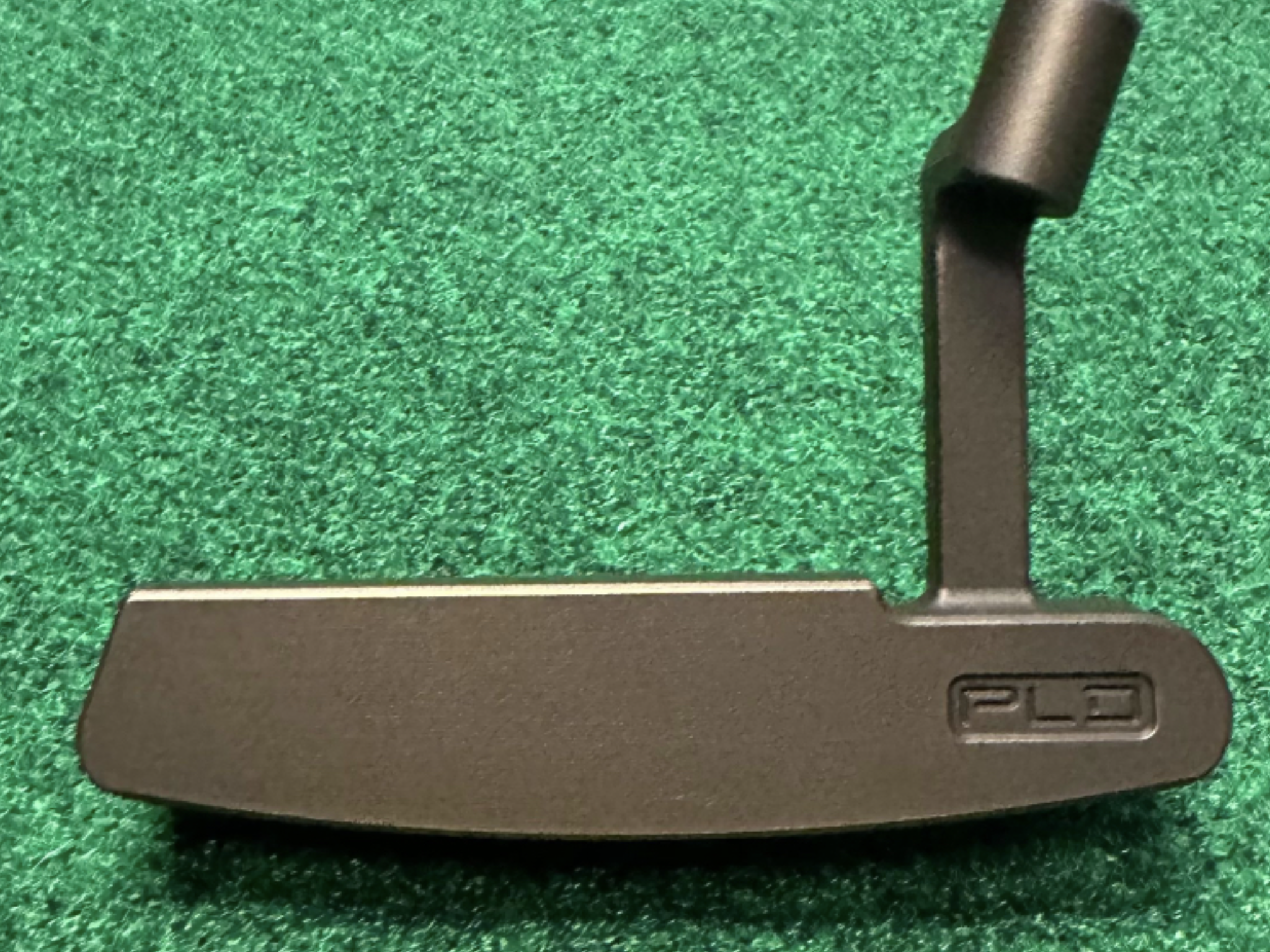
At GolfWRX, we are a community of like-minded individuals that all experience and express our enjoyment of the game in many ways.
It’s that sense of community that drives day-to-day interactions in the forums on topics that range from best driver to what marker you use to mark your ball. It even allows us to share another thing we all love – buying and selling equipment.
Currently, in our GolfWRX buy/sell/trade (BST) forum, there is a listing for a Ping PLD Limited Anser – 1988 Open Championship – #2 of only 88 Made.
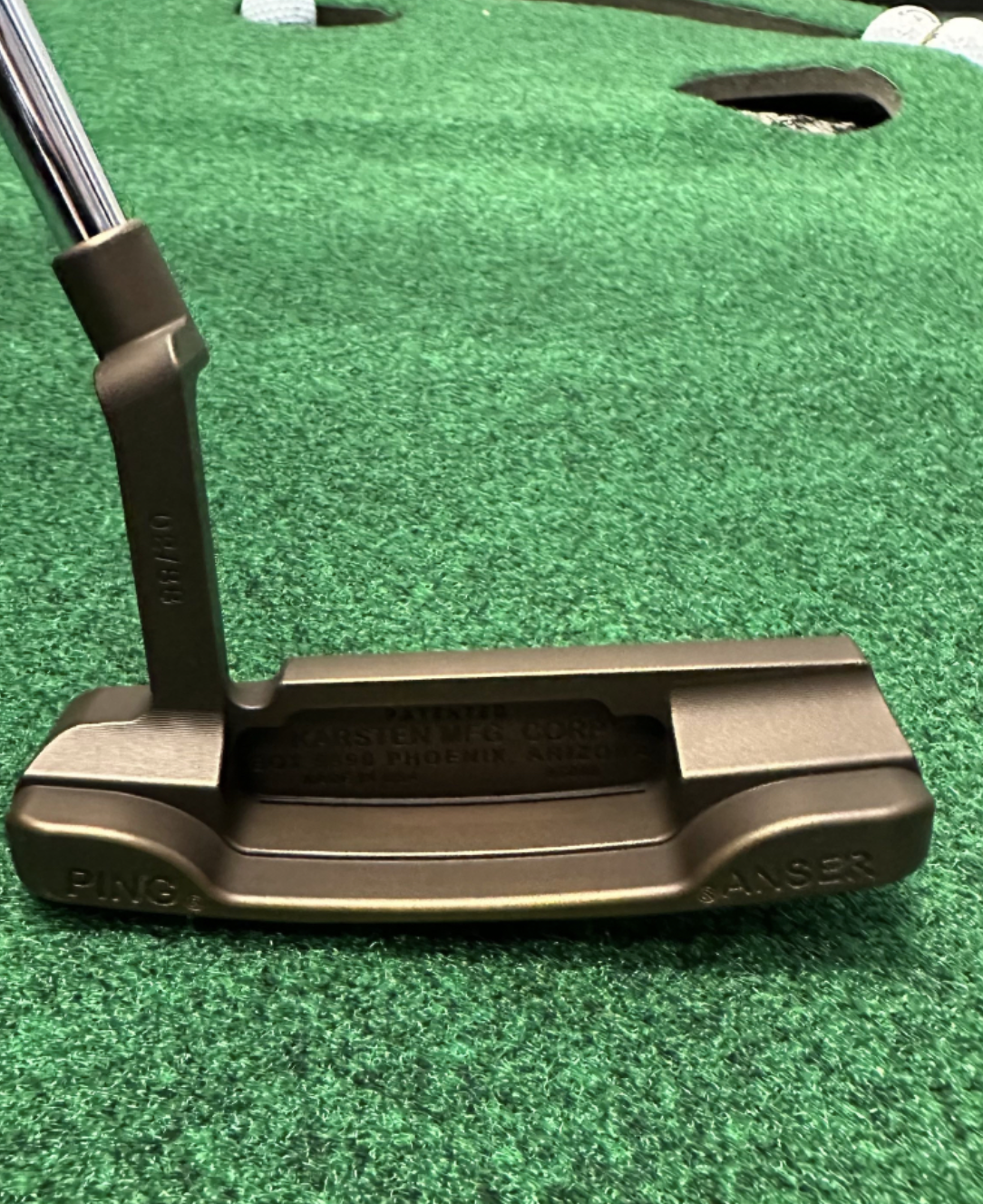
From the seller: (@DLong72): “Ping PLD Limited Anser – 1988 Open Championship – #2 of only 88 Made. ?: $1150. ?? 100% milled collectors item from the limited releases commemorating when Ping putters won every major in 1988 (88 putters made). This was the model Seve Ballesteros used to win the 1988 Open Championship. Condition is brand new, never gamed, everything is in the original packaging as it came. Putter features the iconic sound slot.
Specs/ Additional Details
-100% Milled, Aluminum/Bronze Alloy (310g)
-Original Anser Design
-PING PP58 Grip
-Putter is built to standard specs.”
To check out the full listing in our BST forum, head through the link: Ping PLD Limited Anser – 1988 Open Championship – #2 of only 88 Made
This is the most impressive current listing from the GolfWRX BST, and if you are curious about the rules to participate in the BST Forum you can check them out here: GolfWRX BST Rules
- LIKE3
- LEGIT0
- WOW0
- LOL0
- IDHT0
- FLOP0
- OB0
- SHANK0
Equipment
Inside Collin Morikawa’s recent golf ball, driver, 3-wood, and “Proto” iron changes
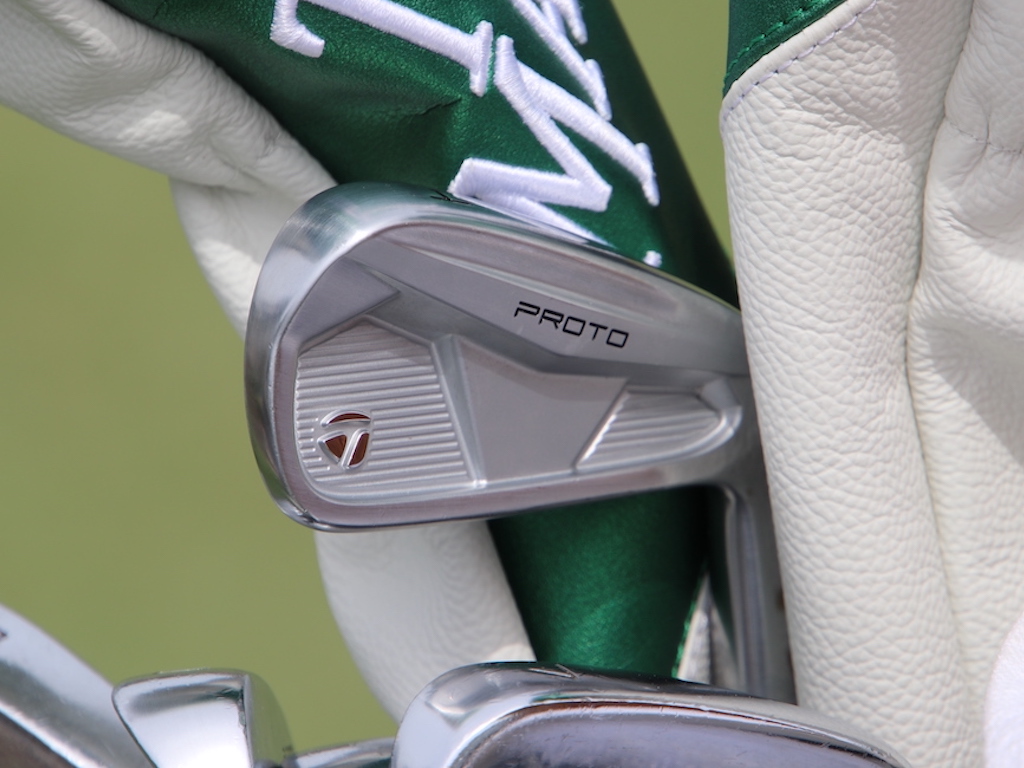
As you probably know by now, Collin Morikawa switched putters after the first round of The Masters, and he ultimately went on to finish T3.
The putter was far from the only change he made last week, however, and his bag is continuing to change this week at the 2024 RBC Heritage.
On the range of The Masters, Morikawa worked closely with Adrian Reitveld, TaylorMade’s Senior Manager of Tour at TaylorMade, to find the perfect driver and 3-wood setups.
Morikawa started off 2024 by switching into TaylorMade’s Qi10 Max driver, but since went back to his faithful TaylorMade SIM – yes, the original SIM from 2020. Somehow, some way, it seems Morikawa always ends up back in that driver, which he used to win the 2020 PGA Championship, and the 2021 Open Championship.
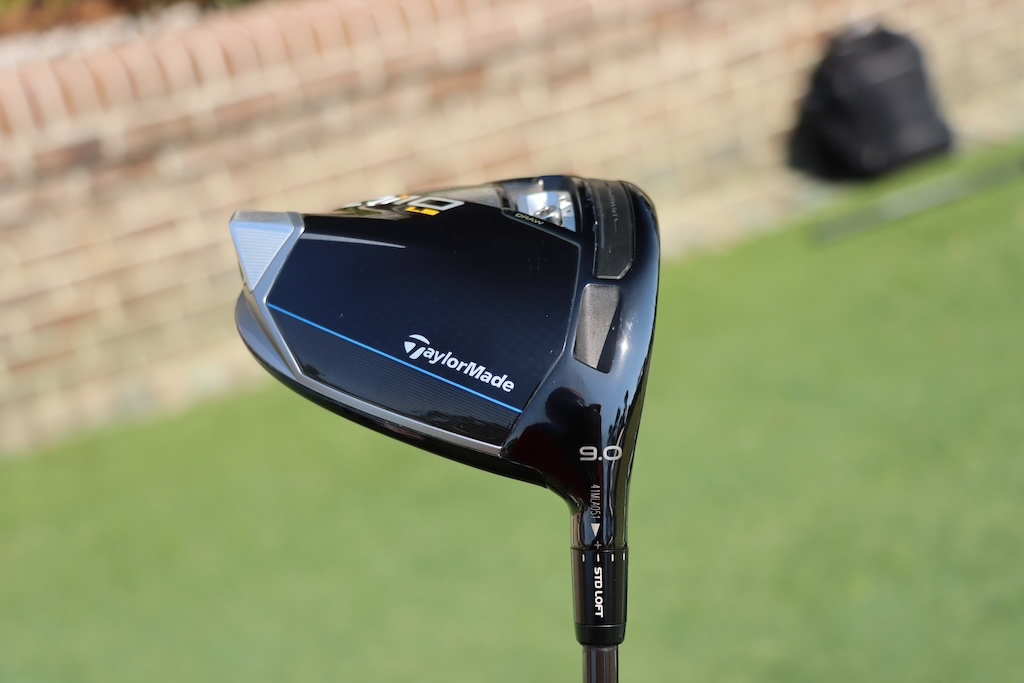
At The Masters, however, Rietveld said the duo found the driver head that allowed “zero compromise” on Morikawa’s preferred fade flight and spin. To match his preferences, they landed on a TaylorMade Qi10 LS 9-degree head, and the lie angle is a touch flatter than his former SIM.
“It’s faster than his gamer, and I think what we found is it fits his desired shot shape, with zero compromise” Rietveld told GolfWRX.com on Wednesday at the RBC Heritage.
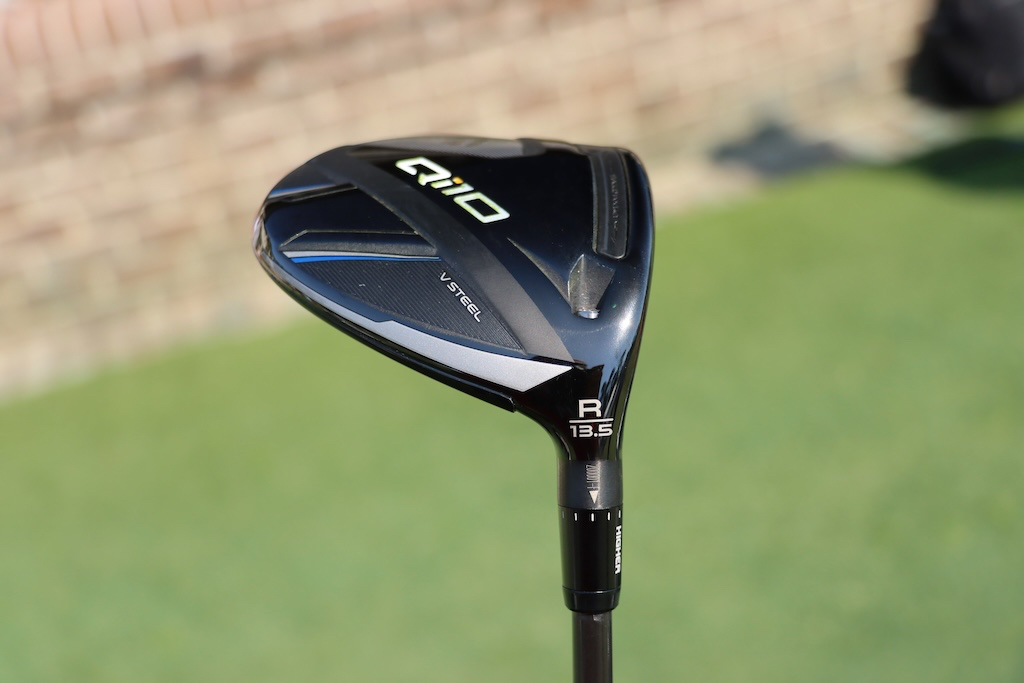
Then, to replace his former SIM rocket 3-wood, Morikawa decided to switch into the TaylorMade Qi10 core model 13.5-degree rocket head, with an adjustable hosel.
“He likes the spin characteristics of that head,” Rietveld said. “Now he’s interesting because with Collin, you can turn up at a tournament, and you look at his 3-wood, and he’s changed the setting. One day there’s more loft on it, one day there’s less loft on it. He’s that type of guy. He’s not scared to use the adjustability of the club.
“And I think he felt our titanium head didn’t spin as low as his original SIM. So we did some work with the other head, just because he liked the feel of it. It was a little high launching, so we fit him into something with less loft. It’s a naughty little piece of equipment.”

In addition to the driver and fairway wood changes, Morikawa also debuted his new “MySymbol” jersey No. 5 TP5x golf ball at The Masters. Morikawa’s choice of symbols is likely tied to his love of the Los Angeles Dodgers baseball team.
Not enough changes for you? There’s one more.

On Wednesday at the 2024 RBC Heritage, Morikawa was spotted with a new TaylorMade “Proto” 4-iron in the bag. If you recall, it’s the same model that Rory McIlroy debuted at the 2024 Valero Texas Open.
According to Morikawa, the new Proto 4-iron will replace his old P-770 hollow-bodied 4-iron.
“I used to hit my P-770 on a string, but sometimes the distance would be a little unpredictable,” Morikawa told GolfWRX.com. “This one launches a touch higher, and I feel I can predict the distance better. I know Rory replaced his P-760 with it. I’m liking it so far.”
See Morikawa’s full WITB from the 2024 RBC Heritage here.
- LIKE86
- LEGIT8
- WOW3
- LOL6
- IDHT2
- FLOP4
- OB3
- SHANK6
-

 19th Hole1 week ago
19th Hole1 week agoDave Portnoy places monstrous outright bet for the 2024 Masters
-

 19th Hole3 weeks ago
19th Hole3 weeks agoThings got heated at the Houston Open between Tony Finau and Alejandro Tosti. Here’s why
-

 19th Hole2 weeks ago
19th Hole2 weeks agoTiger Woods arrives at 2024 Masters equipped with a putter that may surprise you
-

 19th Hole2 weeks ago
19th Hole2 weeks agoReport: Tiger Woods has ‘eliminated sex’ in preparation for the 2024 Masters
-

 19th Hole5 days ago
19th Hole5 days agoTwo star names reportedly blanked Jon Rahm all week at the Masters
-

 19th Hole5 days ago
19th Hole5 days agoNeal Shipley presser ends in awkward fashion after reporter claims Tiger handed him note on 8th fairway
-

 19th Hole4 days ago
19th Hole4 days agoReport: LIV Golf identifies latest star name they hope to sign to breakaway tour
-

 19th Hole3 weeks ago
19th Hole3 weeks agoAddiction, spinal fusion, and scam artists – Everything Anthony Kim revealed in candid interview with David Feherty

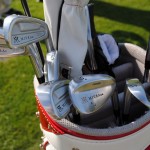
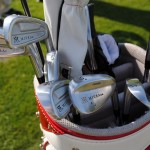
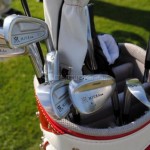
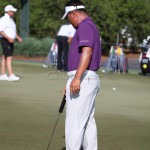
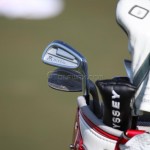
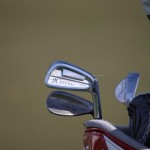
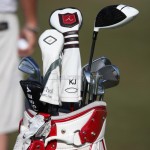
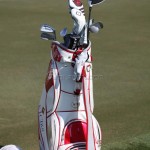
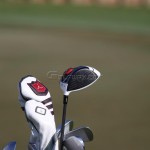


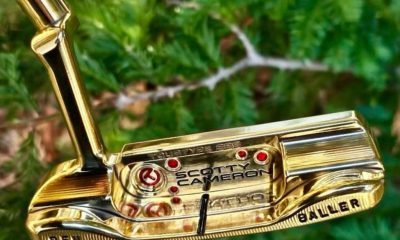

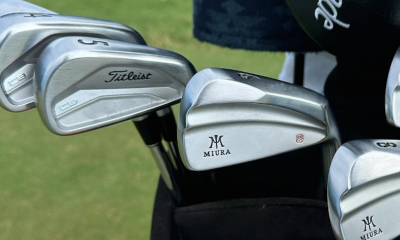

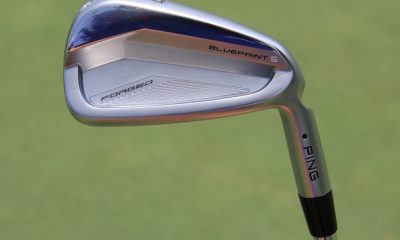

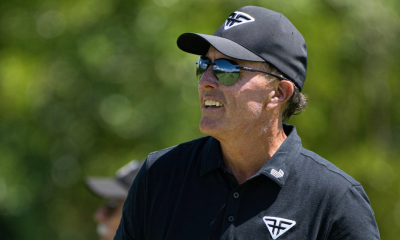

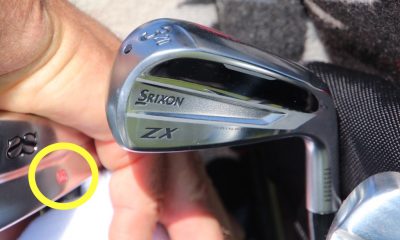

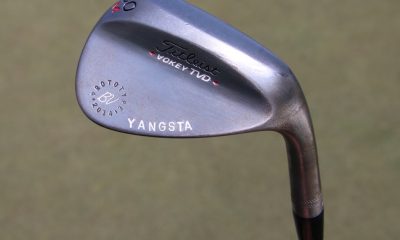













John
Sep 19, 2012 at 1:04 am
Jon, oftentimes players prefer softer wedges as they are not making full/all-out swings with those clubs. They are looking for more feel and control in the short, scoring shots. For this reason, we often build the wedges a little softer than the rest of the set.
Jon
Jul 12, 2012 at 2:57 pm
I don’t understand the math. If 4 cycles per 0.5 inches is the rate, how do we go from a 38.5″ 4 iron at 314 cpm to a 34.5″ wedge at 334 cpm? Four inches is eight one-half inches, times 4 cycles, is 32 cycles. 314+32=346, not 334. The article makes no sense.
Michael
Jun 8, 2012 at 4:33 am
Old news from the building stand point. I try to avoid using taper tip shafts, since you can’t make a set with a correct frequency slope. You would have to have to many sets in your workshop, to do it right and you would have to through away to many shafts, that just don’t fit into a matched set. This is why I always try to work with parallel tips.
Tim
May 17, 2012 at 1:23 am
Mike, Really? That my friend, is how you frequency match a set of clubs.
Ian
May 12, 2012 at 11:02 pm
Bill Choung does great work. He did several clubs for me in Dallas years ago as well as clubs for many of my friends….the work was always first class
Mike Krzewsky
May 11, 2012 at 9:34 pm
I heard this guy is not all that great and he had originally messed up KJ’s clubs by cutting the tip end instead of the butt end.
Brian Cass
May 11, 2012 at 9:59 am
This is why Villegas and McDowell have struggled after seemingly nonsensical equipment changes (McDowell wins at Pebble then takes a signing bonus to Srixon…where’s he been of late?) Villegas wins Honda then switches to TMade (where’s he been of late???).
Sam
May 9, 2012 at 12:47 pm
Had that exact same thing done several years ago to a set (frequency matched parallel tip shafts installed). Initially felt soft but played some marvelous rounds with them. Went back to tapered tips and regretted selling the set ever since.
Pingback: Anonymous
Pingback: Equipment changes come full circle for Choi | Augusta Blog